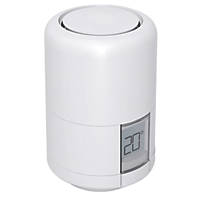- Joined
- 9 Jan 2020
- Messages
- 5
- Reaction score
- 0
- Country

Hello just looking a few things clarified before I order a hive heating system.
1. The time clock I have - will I just have to keep both zones on permanetly on?
2. I have two thermostats in the house one up stairs and one downstairs ( see pictures ) can I just wire the hive reciever into these by looking it appears I have the correct connections at these already? ( Will be purchasing the hive multi zone)
3. If I can do the above I intend to mount the hive thermostat just beside the reciever will this be an issue?
[GALLERY=media, 103770]IMG_20200109_161348 by Chris lowry posted 9 Jan 2020 at 4:29 PM[/GALLERY]
[GALLERY=media, 103769]IMG_20200109_161353 by Chris lowry posted 9 Jan 2020 at 4:29 PM[/GALLERY]
[GALLERY=media, 103768]IMG_20200109_161902 by Chris lowry posted 9 Jan 2020 at 4:29 PM[/GALLERY]
[GALLERY=media, 103767]IMG_20200109_161951 by Chris lowry posted 9 Jan 2020 at 4:29 PM[/GALLERY]
1. The time clock I have - will I just have to keep both zones on permanetly on?
2. I have two thermostats in the house one up stairs and one downstairs ( see pictures ) can I just wire the hive reciever into these by looking it appears I have the correct connections at these already? ( Will be purchasing the hive multi zone)
3. If I can do the above I intend to mount the hive thermostat just beside the reciever will this be an issue?
[GALLERY=media, 103770]IMG_20200109_161348 by Chris lowry posted 9 Jan 2020 at 4:29 PM[/GALLERY]
[GALLERY=media, 103769]IMG_20200109_161353 by Chris lowry posted 9 Jan 2020 at 4:29 PM[/GALLERY]
[GALLERY=media, 103768]IMG_20200109_161902 by Chris lowry posted 9 Jan 2020 at 4:29 PM[/GALLERY]
[GALLERY=media, 103767]IMG_20200109_161951 by Chris lowry posted 9 Jan 2020 at 4:29 PM[/GALLERY]

